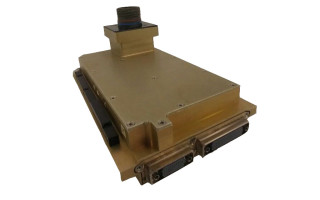Each issue, the editorial staff of Military Embedded Systems will highlight a different charitable organization that benefits the military, veterans, and their families. We are honored to cover the technology that protects those who protect us every day. To back that up, our parent company – OpenSystems Media – will make a donation to every group we showcase on this page.
Military Embedded Systems
Op-Eds
Giving Back -- Vets In Tech - Blog
August 04, 2020Each issue, the editorial staff of Military Embedded Systems will highlight a different charitable organization that benefits the military, veterans, and their families. We are honored to cover the technology that protects those who protect us every day. To back that up, our parent company – OpenSystems Media – will make a donation to every group we showcase on this page.
UFOs and the kill web - Blog
July 29, 2020WARFARE EVOLUTION BLOG. In late 2013, Combat Aircraft Monthly magazine published an article about the Iranian military’s encounters with UFOs (Unidentified Flying Objects). The article states that in November 2004 and again in January 2012, the Iranian Air Force scrambled their fighter planes to intercept unidentified aircraft flying over their secret nuclear facilities. The pilots reported that the invading aircraft were spherical, emitted a greenish light, executed maneuvers that defied the laws of physics, disabled the electronic systems onboard their fighter planes, and flew away at MACH 10 (7672 MPH). Iranian authorities insisted that these unidentified aircraft were advanced-technology reconnaissance drones flown by America’s CIA. This incident, among many others, demands that we explore UFOs and how they fit in the kill web.
LIVE: New Military Embedded Systems website - Blog
June 10, 2020SCOTTSDALE, Arizona. Our new website and new URL: MilitaryEmbedded.com are now live. We are very excited. A big thank you to our development team, production team, and editorial staff for bringing our new online home together. Check out some highlights and key categories below and then browse away.
Unmanned fighter planes (UCAVs) and the kill web - Blog
June 09, 2020WARFARE EVOLUTION BLOG. Unmanned autonomous fighter planes are the most interesting elements in the advanced kill web, even more intriguing than the manned super-stealthy 6G fighter planes we discussed in previous articles. UCAVs (Unmanned Combat Aerial Vehicles) have the potential to render our enemy’s A2/AD (anti-access/area-denial) strategies completely obsolete. These platforms appear under different names: Loyal Wingman, ATC (Airpower Teaming System), Dark Sword, Taranis, Remote Carriers, nEUROn, and Sidekicks. To understand how they enhance the kill web, we need to look at their specifications and their missions.
Radar/EW
Making a case for small form factor embedded computing for military applications - Blog
May 27, 2020Defense funding for unmanned and artificial intelligence (AI) systems is increasing by leaps and bounds, driving the need for computing systems to be smaller, faster, and more compatible. The demand for compatibility and commonality follows the convergence of open architecture initiatives like the Sensor Open Systems Architecture (SOSA), C4ISR/EW [electronic warfare] Modular Open Suite of Standards (CMOSS), and Modular Open Radio Frequency Architecture (MORA), just to name a few.
What defines a military-grade rugged tablet? - Blog
May 08, 2020Radar/EW
SOSA and VPX - Blog
April 30, 2020Radar/EW
2020 State of the VITA Technology Industry - Spring Edition - Blog
April 30, 2020Comms
How the kill web manipulates time and space - Blog
March 31, 2020Military power conversion: the value of strategic customization (Part 1) - Blog
March 30, 2020Comms
POSTPONED dates announced for AEROSPACE TECH WEEK - Blog
March 24, 2020A.I.
Radar/EW
-
Electronic warfare and the evolving landscape: Focus of upcoming AOC symposium
December 04, 2025
-
Next-gen aircraft protection technologies sought by U.S. Air Force
December 03, 2025
-
Electronic warfare threat-detection support to be provided to U.S. Army by CACI
December 03, 2025
-
PRODUCT OF THE WEEK: Annapolis Micro Systems 3U OpenVPX Ethernet/PCIe/LVDS Switch
December 02, 2025
-
AI wargaming platform to be advanced for U.S. Air Force by AMESA
December 03, 2025
-
Image generator for military training using Unreal Engine introduced by Lockheed Martin, Blackshark.ai
December 03, 2025
-
AI-enabled counter-UAS system wins Army competition
November 24, 2025
-
Command-and-control task order to advance multi-domain capabilities under new COBRA award
November 21, 2025
Cyber
-
DoD awards Hewlett Packard Enterprise a 10-year contract for cloud computing upgrades
December 01, 2025
-
PRODUCT OF THE WEEK: Atek DataKey Mini-Bar Crypto Ignition Key series
November 10, 2025
-
Network and cyber support contract signed between Sev1Tech and Navy command
October 15, 2025
-
Firefly Aerospace to acquire SciTec, Inc.
October 06, 2025
-
Beyond GNSS/GPS: magnetic navigation and multisensor resilience in contested skies
December 04, 2025
-
Power under pressure: Meeting the military’s surging energy demands
December 04, 2025
-
Shield AI, Sedaro partner to build software to support on-orbit operations
December 04, 2025
-
Hydra MAX SATCOM terminal reaches TRL 6 in U.S. Army testing
November 26, 2025













